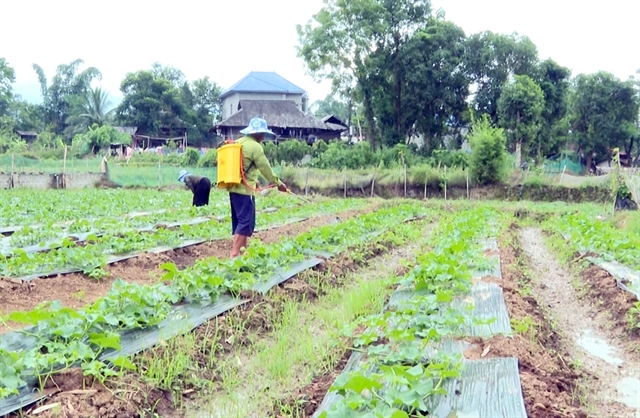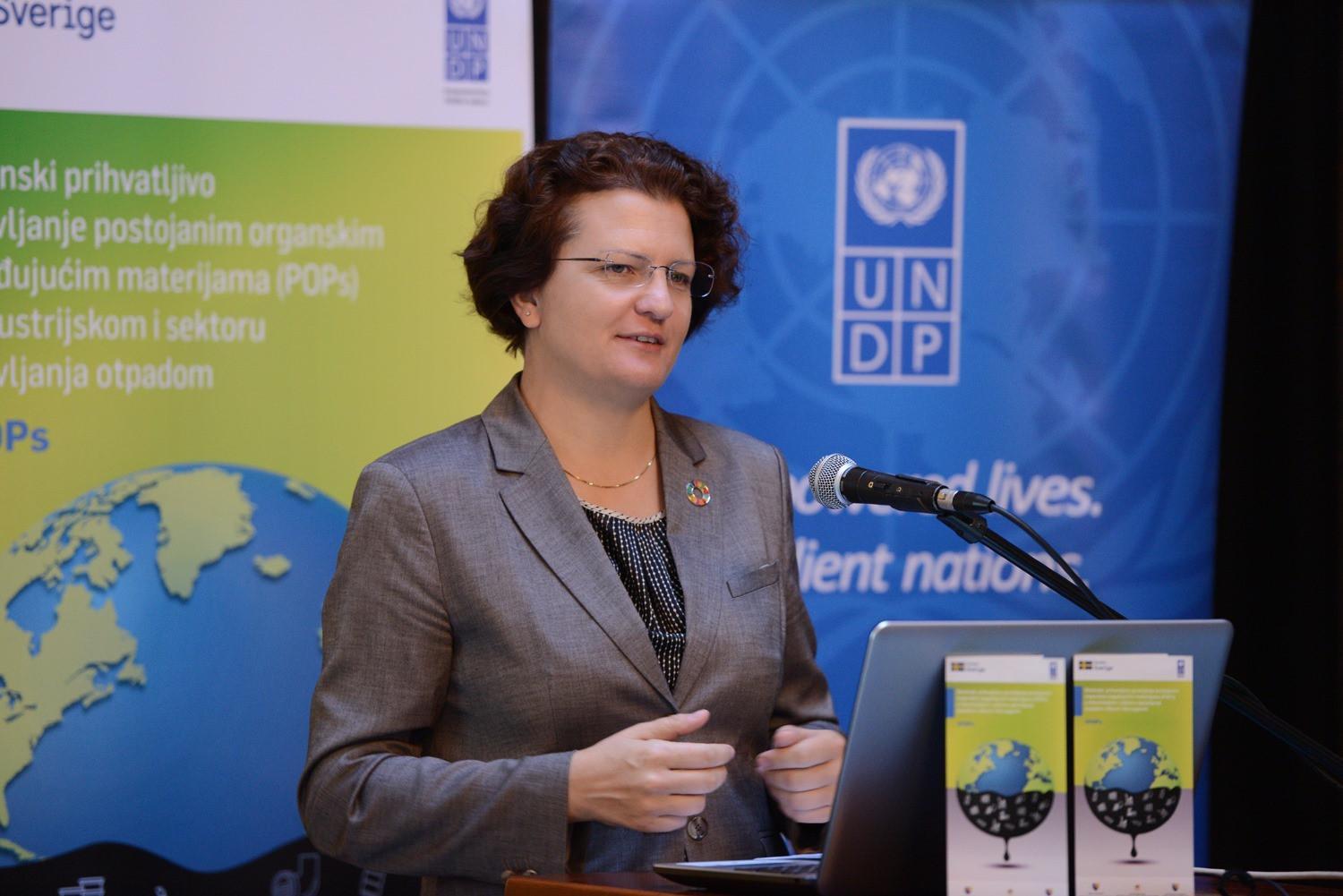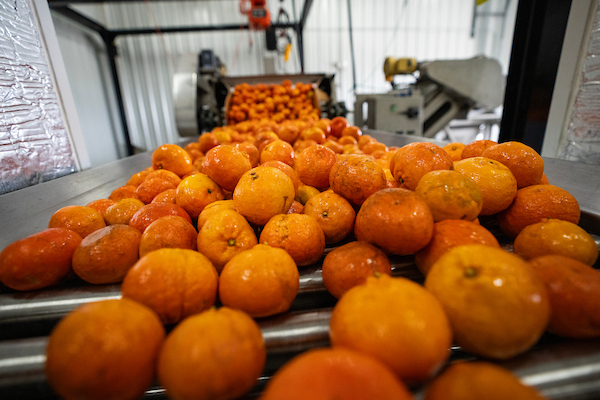Vaccinium Extract Shields Skin Cells from PM2.5 Damage – Bioengineer.org

Report on the Protective Efficacy of Vaccinium oldhamii Extract Against PM2.5-Induced Cellular Damage
1.0 Introduction: Addressing Environmental Health and Sustainable Development
Recent research provides a significant advancement in mitigating the public health risks associated with fine particulate matter (PM2.5) pollution, a critical challenge outlined in the Sustainable Development Goals (SDGs). This report details the findings of a 2025 study on an ethanol extract from Vaccinium oldhamii fruits, which demonstrates potent protective effects against PM2.5-induced damage in human skin cells. The findings directly support progress towards SDG 3 (Good Health and Well-being) by addressing the reduction of illnesses from air pollution and SDG 11 (Sustainable Cities and Communities) by offering solutions to manage the adverse environmental impacts of urban areas.
2.0 Research Focus and Key Cellular Mechanisms
The study investigated the capacity of the polyphenolic-rich Vaccinium oldhamii extract to counteract the cytotoxic effects of PM2.5 on human keratinocytes. As the primary cells of the epidermis, keratinocytes are the first line of defense against environmental pollutants. The research identified a multi-faceted protective mechanism against cellular damage.
- Suppression of Oxidative Stress: The extract effectively inhibited the overproduction of reactive oxygen species (ROS) induced by PM2.5, a primary driver of cellular damage and premature aging.
- Restoration of Mitochondrial Integrity: Treatment with the extract restored mitochondrial function and cellular viability, shielding the cell’s energy production centers from pollutant-induced toxicity.
- Normalization of Autophagy: The extract regulated the cellular process of autophagy, preventing the excessive, self-destructive activation that PM2.5 exposure can trigger.
- Inhibition of Apoptosis: By mitigating oxidative stress and normalizing autophagy, the extract successfully suppressed the pathway leading to programmed cell death (apoptosis) in skin cells.
3.0 Alignment with Global Sustainable Development Goals (SDGs)
The implications of this research extend beyond dermatological science, contributing directly to several key SDGs. The development of nature-based solutions for pollution-related health issues represents a sustainable approach to global challenges.
- SDG 3: Good Health and Well-being: By providing a natural intervention to protect skin from air pollutants, this research contributes to Target 3.9, which aims to substantially reduce the number of deaths and illnesses from hazardous chemicals and air, water, and soil pollution.
- SDG 11: Sustainable Cities and Communities: The findings offer a tangible tool to mitigate the adverse health impacts of urban air quality, supporting Target 11.6 to reduce the adverse per capita environmental impact of cities.
- SDG 12: Responsible Consumption and Production: The use of a plant-derived, natural extract promotes sustainable production patterns and meets growing consumer demand for clean and safe products. This aligns with the goal of achieving the environmentally sound management of chemicals and reducing their release to air, water, and soil.
- SDG 15: Life on Land: This study underscores the value of biodiversity and the importance of sustainably managing terrestrial ecosystems. Vaccinium oldhamii serves as an example of how natural resources, when managed responsibly, can provide solutions to human health challenges, reinforcing the need to protect biodiversity.
4.0 Future Applications and Strategic Importance
The demonstrated efficacy and low cytotoxicity of the Vaccinium oldhamii extract position it as a prime candidate for integration into preventative skincare and cosmeceutical formulations. This research paves the way for the development of novel, evidence-based products designed to protect urban populations from the dermatological effects of air pollution. Further investigation into other plant-based extracts and their synergistic effects could broaden the arsenal of natural tools available to combat environmental health threats, fostering innovation that is both effective and sustainable.
Analysis of Sustainable Development Goals in the Article
-
SDGs Addressed or Connected to the Issues
The article discusses issues and solutions that are directly and indirectly connected to several Sustainable Development Goals (SDGs). The primary connections are to health, sustainable urban environments, and the use of natural resources.
- SDG 3: Good Health and Well-being: The core focus of the article is on mitigating the adverse health effects of air pollution. It details how PM2.5 pollution causes cellular damage, oxidative stress, and skin diseases, and presents a natural extract as a solution to “safeguarding human health.”
- SDG 11: Sustainable Cities and Communities: The problem originates from “urban air pollution levels worldwide.” The article explicitly mentions that “as urbanization accelerates and air quality challenges intensify,” the need for solutions to environmental damage becomes critical, linking the research directly to the environmental quality of cities.
- SDG 12: Responsible Consumption and Production: The research promotes a solution derived from a natural, plant-based source (*Vaccinium oldhamii*). It aligns with “rising consumer demand for sustainable and health-conscious beauty solutions” and emphasizes the use of natural compounds over synthetic agents, touching upon sustainable management of natural resources and promoting sustainable consumption patterns.
- SDG 15: Life on Land: The study utilizes a plant-based genetic resource (*Vaccinium oldhamii*) and its bioactive components. The article suggests this could “inspire further exploration into other natural extracts,” highlighting the value of biodiversity and the sustainable use of terrestrial ecosystems for human health and well-being.
-
Specific Targets Identified
Based on the article’s content, several specific SDG targets can be identified as being directly relevant to the research and its implications.
- Target 3.9: “By 2030, substantially reduce the number of deaths and illnesses from hazardous chemicals and air, water and soil pollution and contamination.” The article directly addresses this by investigating a method to protect human skin cells from the harmful effects of air pollution (PM2.5), which is known to cause illnesses like “dermatological conditions” and “pollutant-induced premature aging.”
- Target 11.6: “By 2030, reduce the adverse per capita environmental impact of cities, including by paying special attention to air quality…” The entire premise of the study is to counteract the health damage caused by poor urban air quality, specifically from “fine particulate matter (PM2.5) pollution.”
- Target 12.2: “By 2030, achieve the sustainable management and efficient use of natural resources.” The study proposes using a natural, plant-derived extract as an effective agent, promoting the use of renewable, natural resources for developing “novel cosmeceuticals” and skincare solutions.
-
Indicators Mentioned or Implied
While the article does not mention official SDG indicators, it implies several metrics that could be used to measure progress toward the identified targets.
- For Target 3.9:
- Incidence of pollution-related skin conditions: The article’s goal is to mitigate “dermatological conditions” and “skin aging” caused by pollution. A reduction in these conditions would be a direct measure of progress.
- Biomarkers of cellular damage: The study uses specific in-vitro assays like “ROS quantification” and “mitochondrial membrane potential analysis” to measure the cellular damage caused by PM2.5. These biomarkers serve as direct indicators of the health impact of air pollution at a cellular level.
- For Target 11.6:
- Ambient concentration of PM2.5: The article identifies “fine particulate matter (PM2.5)” as the primary environmental stressor. Monitoring the levels of this pollutant in urban areas is a key indicator of the environmental impact of cities.
- For Target 12.2:
- Use of natural ingredients in consumer products: The article highlights the development of “natural, plant-based extracts” for skincare. The market share and development of such products can be an indicator of a shift towards more sustainable use of natural resources in the cosmetics industry.
- For Target 3.9:
-
Summary Table of SDGs, Targets, and Indicators
SDGs Targets Indicators (Implied from the Article) SDG 3: Good Health and Well-being Target 3.9: Substantially reduce illnesses from air pollution and contamination. - Reduction in the incidence of pollution-related dermatological conditions.
- Levels of cellular oxidative stress markers (e.g., ROS) in exposed populations.
SDG 11: Sustainable Cities and Communities Target 11.6: Reduce the adverse per capita environmental impact of cities, focusing on air quality. - Ambient concentrations of fine particulate matter (PM2.5) in urban areas.
SDG 12: Responsible Consumption and Production Target 12.2: Achieve the sustainable management and efficient use of natural resources. - Development and market adoption of products derived from natural, plant-based extracts (e.g., in cosmeceuticals).
SDG 15: Life on Land Target 15.6: Promote fair and equitable sharing of the benefits arising from the utilization of genetic resources. - Number of research studies and commercial applications developed from the utilization of plant-based genetic resources like *Vaccinium oldhamii*.
Source: bioengineer.org
What is Your Reaction?
 Like
0
Like
0
 Dislike
0
Dislike
0
 Love
0
Love
0
 Funny
0
Funny
0
 Angry
0
Angry
0
 Sad
0
Sad
0
 Wow
0
Wow
0
















































































